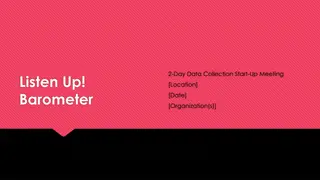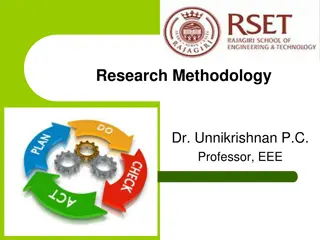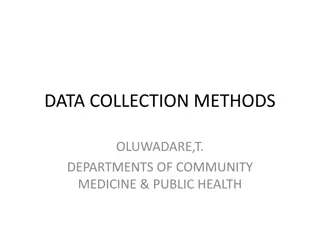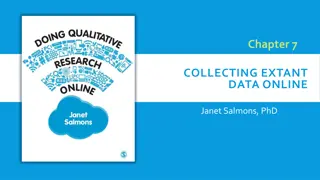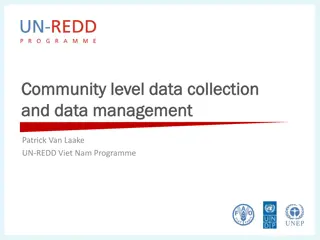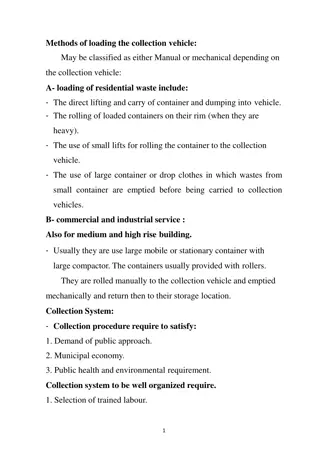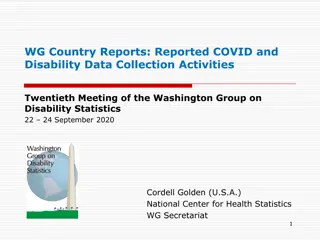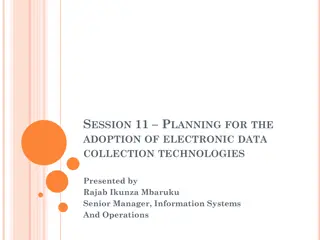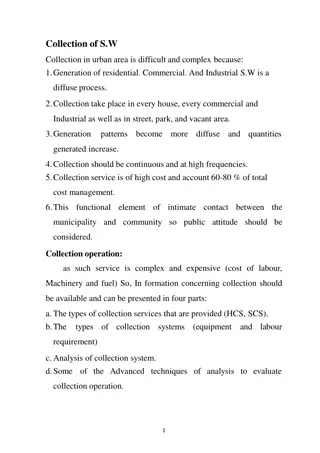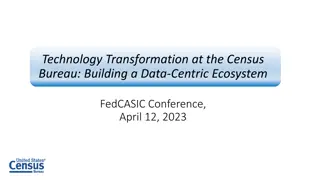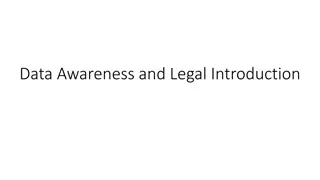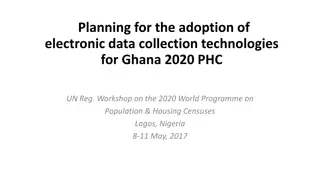
Data Collection Methods for Research Success
Explore primary and secondary data collection methods, including quantitative and qualitative approaches, for effective market research and demand forecasting. Learn how surveys can provide valuable insights from target audiences.
Download Presentation

Please find below an Image/Link to download the presentation.
The content on the website is provided AS IS for your information and personal use only. It may not be sold, licensed, or shared on other websites without obtaining consent from the author. If you encounter any issues during the download, it is possible that the publisher has removed the file from their server.
You are allowed to download the files provided on this website for personal or commercial use, subject to the condition that they are used lawfully. All files are the property of their respective owners.
The content on the website is provided AS IS for your information and personal use only. It may not be sold, licensed, or shared on other websites without obtaining consent from the author.
E N D
Presentation Transcript
The choice of data collection method depends on the research question being addressed, the type of data needed, and the resources and time available. Data collection methods can be categorized into primary and secondary methods.
Primary data is collected from first-hand experience and is not used in the past. The data gathered by primary data collection methods are highly accurate and specific to the research s motive. Primary data collection methods can be divided categories:quantitative and qualitative. into two
Quantitative techniques for market research and demand forecasting usually use statistical tools. In these techniques, demand is forecasted based on historical data. These methods of primary data collection are generally used to make long-term forecasts. Statistical analysis methods are highly reliable as subjectivity is minimal. Time Series Analysis: A time series refers to a sequential order of values of a variable, known as a trend, at equal time intervals. Using patterns, an organization can predict the demand for its products and services over a projected time period. Smoothing Techniques: Smoothing techniques can be used in cases where the time series lacks significant trends. They eliminate random variation from the historical demand, helping identify patterns and demand levels to estimate future demand. The most common methods used in smoothing demand forecasting are the simple moving average and weighted moving average methods. Barometric Method: Also known as the leading indicators approach, researchers use this method to speculate future trends based on current developments. When past events are considered to predict future events, they act as leading indicators.
Qualitative data collection methods are especially useful when historical data is unavailable or when numbers or mathematical unnecessary. Qualitative associated with words, sounds, feelings, emotions, colors, and non-quantifiable techniques are based on experience, judgment, intuition, conjecture, emotion, methods do not provide participants responses, underrepresented populations, and require long periods of time to collect the data.Hence,it is best to combine quantitative methods methods. calculations research are is closely elements. These etc. motive don t Quantitative behind the often reach with qualitative
Surveys collect data from the target audience and gather insights into their preferences, opinions, choices, and feedback related to their products and services.Most survey software offers a wide range of question types. You can also use a ready-made survey template to save time and effort.Online surveys can be customized to match the business s brand by changing the theme, logo, etc. They can be distributed through several channels, such as email, website, offline app, QR code, social media, etc.You can select the channel based on your audience s type and source. Once the data is collected, survey software can generate reports and run analytics algorithms to discover hidden insights. A survey dashboard can give you statistics related to demographics-based filters, export and sharing options, etc. Integrating survey builders with third-party apps can maximize the effort spent on online real-time data collection. Practical business intelligence relies on the synergy between analytics and reporting, where analytics uncovers valuable insights, and reporting stakeholders. response rate, completion rate, communicates these findings to
Polls comprise one single or multiple- choice question. They are useful when you need to get a quick pulse of the audience s sentiments. Because they are short, it is easier to get responses from people. Like surveys, online polls can be embedded into various platforms. Once the respondents answer the question, they can also be responses compare to others. shown how their
In this method, the interviewer asks the respondents face-to-face or by telephone.In face-to-face interviews, the interviewer asks a series of questions to the interviewee in person and notes down responses.If it is not feasible to meet the person, the interviewer can go for a telephone interview. This form of data collection is suitable for only a few respondents. It is too time-consuming and tedious to repeat the same process if there are many participants.
In the Delphi method, market experts are provided with the assumptions of other industry experts forecasts. Based on experts may reconsider and revise their estimates and consensus of all experts on demand forecasts constitutes the final demand forecast. estimates and this information, assumptions. The
Focus qualitative data in education. In a focus group,a small group of people,around 8- 10 members, discuss the common areas of the research problem. Each individual provides his or her insights on the issue concerned. A moderator regulates the discussion among the group members.At the end of the discussion, the group reaches a consensus. groups are one example of
A questionnaire is a printed set of open- ended or closed-ended questions that respondents must answer based on their knowledge and experience with the issue. The questionnaire is part of the survey, whereas the questionnaire s end goal may or may not be a survey.

